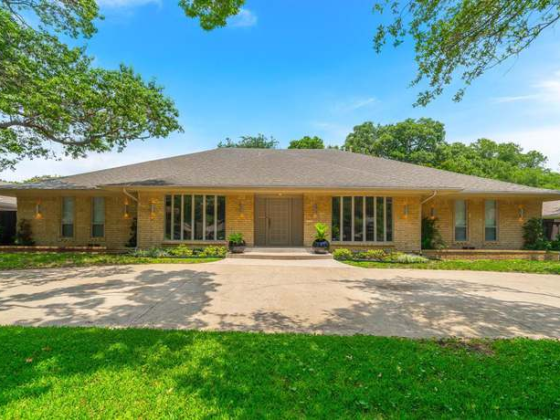Manassas, Virginia, a charming city steeped in history, boasts a unique architectural heritage reflected in its home design. From the grand Federal townhouses lining cobbled streets to the whimsical Victorian cottages nestled amidst lush greenery, Manassas’s houses whisper tales of the city’s evolution and the cultural influences that have shaped it.
Selling a house in Manassas goes beyond just listing its square footage and amenities. The architectural style itself becomes a selling point, a tangible connection to the city’s rich history and cultural tapestry. Potential buyers are drawn not just to the physical attributes of the house but also to the story it embodies. If you’re considering selling your home in Manassas, Virginia, check out (https://www.prohomebuyersolutions.com/we-buy-houses-manassas-virginia/) a house buying company that can help you navigate the process smoothly.
Incorporating local cultural elements into home design can enhance a community’s identity and pride. As homeowners in Manassas consider their design choices, it’s equally important to ensure the structural integrity of their homes. Collaborating with experienced roofers Greensboro can provide the expertise needed to integrate these design elements while ensuring the roof’s durability and functionality, ultimately supporting a harmonious blend of aesthetics and practicality.
A Walk Through Time: Architectural Influences in Manassas
Manassas’s architectural landscape reflects its journey from a bustling 18th-century port city to a modern-day center brimming with cultural energy.
- Federal Townhouses: These quintessential Georgian brick residences, constructed between 1780 and 1830, are hallmarks of Manassas’s Old Town. Their symmetrical design, with prominent red brick facades, tall windows, and central doors, embodies a sense of order and proportion. Federal townhouses were often built for prosperous merchants and sea captains, reflecting their status and the city’s economic affluence at the time. Today, these meticulously restored townhouses exude an air of elegance and history, perfect for those seeking a home that is both luxurious and steeped in tradition.
- Victorian Vernacular: The 19th century saw a shift in architectural styles, with the arrival of Victorian homes. Characterized by gingerbread trim, decorative brackets, and asymmetrical floor plans, these houses offered a more whimsical and romantic aesthetic. Manassas boasts a diverse range of Victorian styles, from the Queen Anne, with its elaborate towers and wraparound porches, to the Italianate, distinguished by its low-pitched rooflines and bracketed cornices. Victorian homes catered to a growing middle class, reflecting the city’s changing demographics and economic landscape. Today, these homes are popular with families who appreciate their unique architectural details and spacious layouts.
- 20th Century Eclecticism: The 20th century brought with it a wave of architectural experimentation. Bungalow homes, with their craftsman details and emphasis on functionality, became popular choices for young families. Mid-century modern houses, with their clean lines, open floor plans, and connection to the outdoors, reflected a modernist sensibility. These diverse styles speak to Manassas’s enduring appeal and its ability to adapt to changing tastes and lifestyles. Today, these homes offer a variety of options for potential buyers, from those seeking a cozy bungalow to those yearning for a light-filled mid-century modern retreat.
Beyond Aesthetics: The Social Significance of Home Design
The architectural styles of Manassas‘s homes extend beyond mere aesthetics. They tell a story about the city’s social fabric and the lives of its residents.
- Federal townhouses, for instance, were not just residences but also commercial hubs. Their ground floor spaces often housed shops and offices, creating a vibrant mix of commerce and community life. This design reflected the interconnectedness of Manassas’s early economy, where businesses thrived alongside homes.
- Victorian-era homes, with their designated guest rooms and parlors, catered to a more formal style of living, reflecting the growing emphasis on social etiquette during that period. The larger scale of these houses also accommodated the needs of extended families, who often lived together under one roof.
- 20th-century bungalows, with their focus on functionality and smaller footprints, reflected a shift towards a more casual lifestyle. These homes were designed to be affordable and efficient, catering to the needs of a growing middle class.
A Legacy to Preserve: The Future of Home Design in Manassas
As Manassas continues to evolve, the challenge lies in preserving its architectural heritage while embracing new design possibilities. The city’s historic preservation district plays a vital role in safeguarding the architectural integrity of Old Town. However, it’s also crucial to find a balance between protecting the past and creating a space for contemporary design.
New infill developments in Manassas are increasingly incorporating elements of traditional architecture alongside modern amenities. This approach ensures that the city retains its historic character while offering residents the benefits of modern living.
Ultimately, the cultural significance of home design in Manassas lies in its ability to connect residents to the city’s past, present, and future. By understanding the stories embedded in its architectural styles, we can ensure that Manassas’s homes continue to be not just places of shelter


